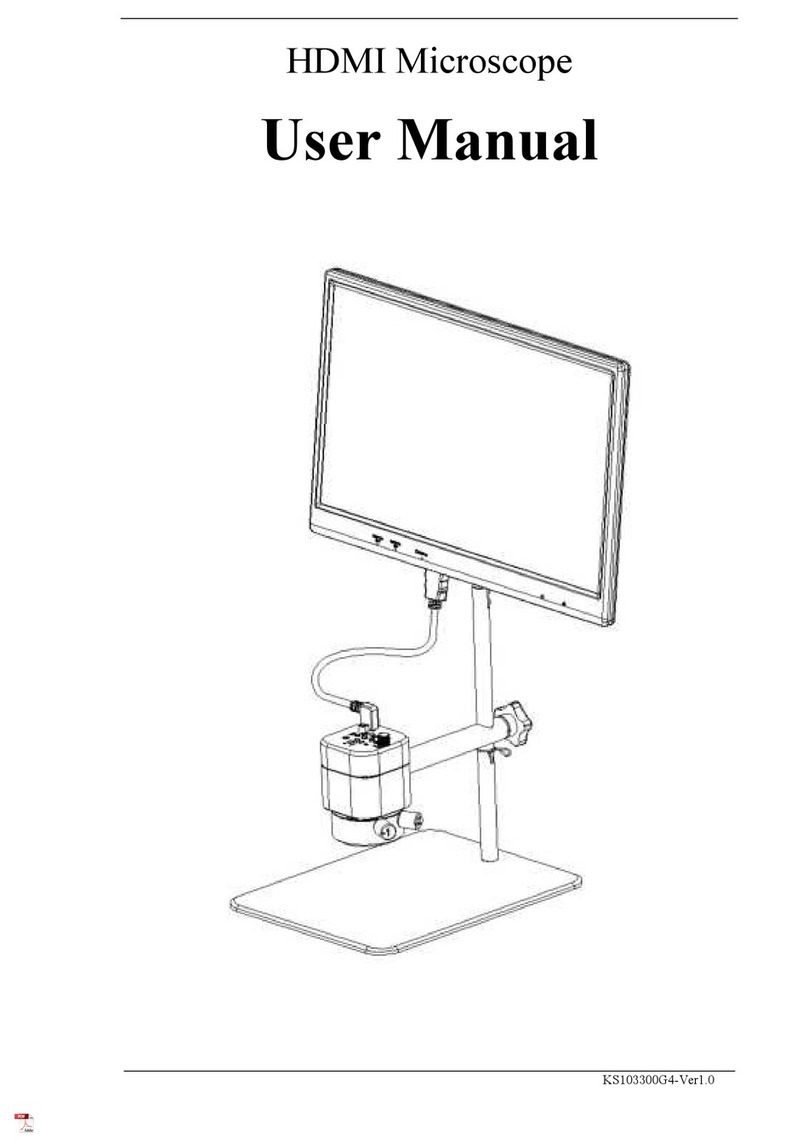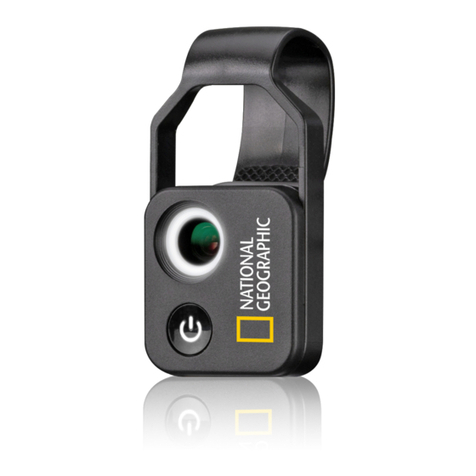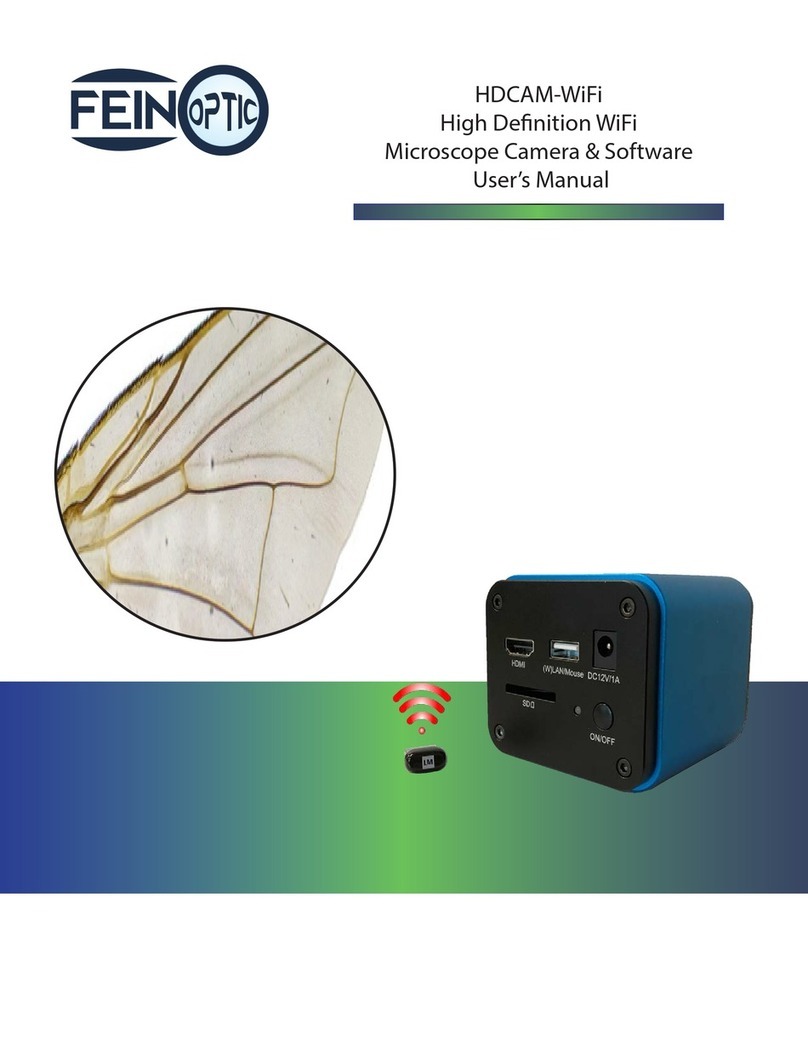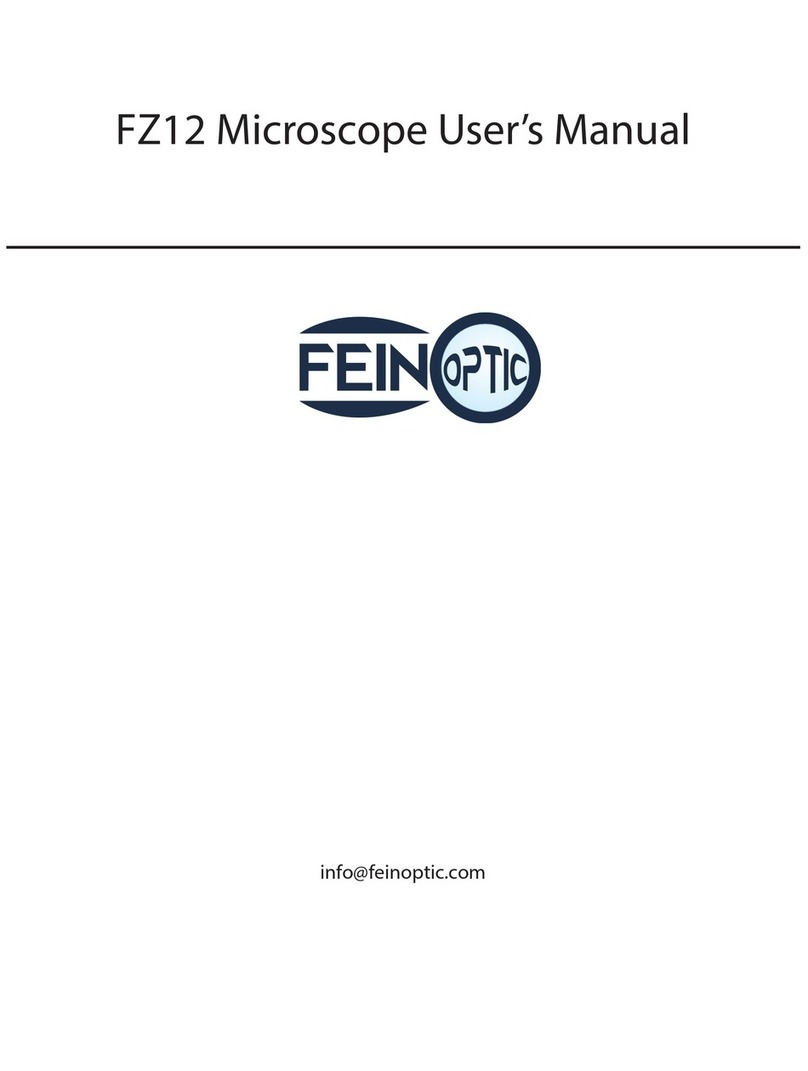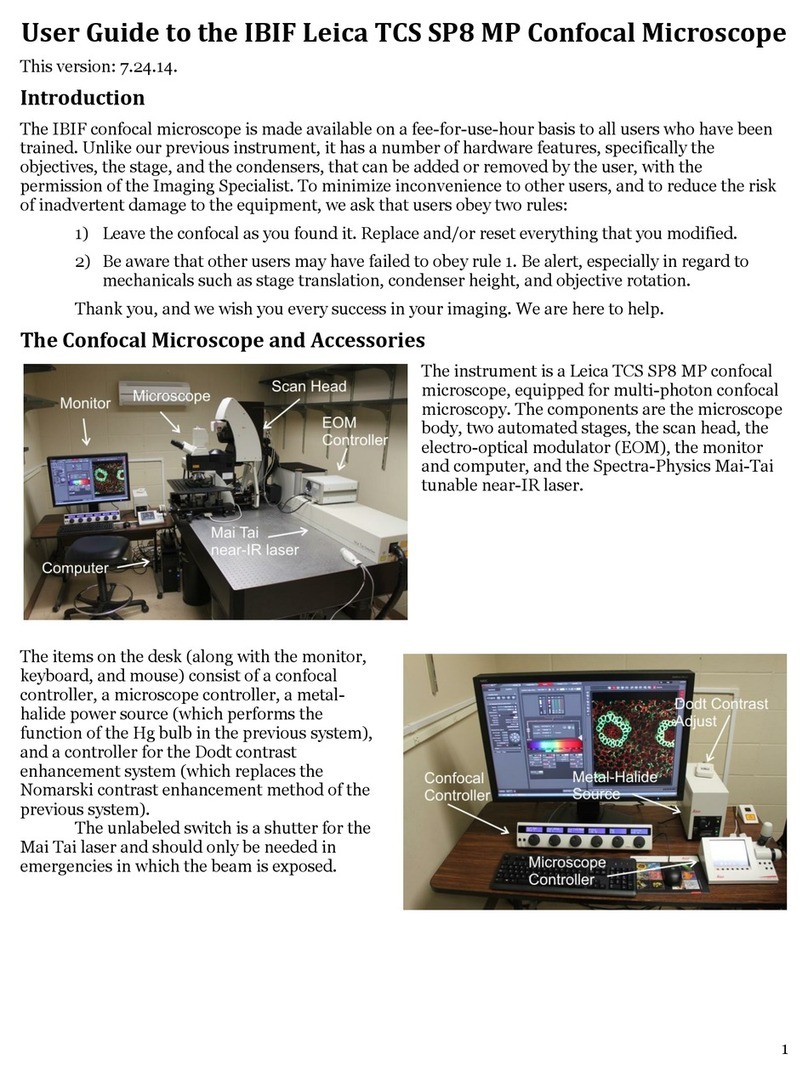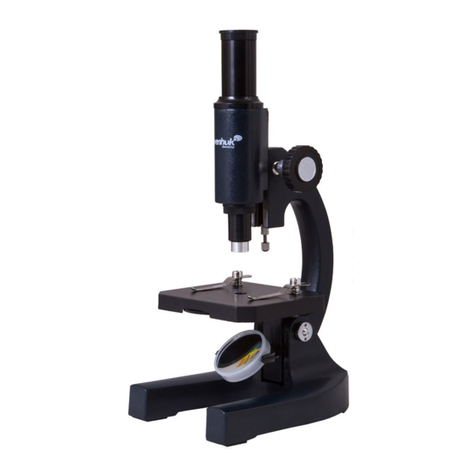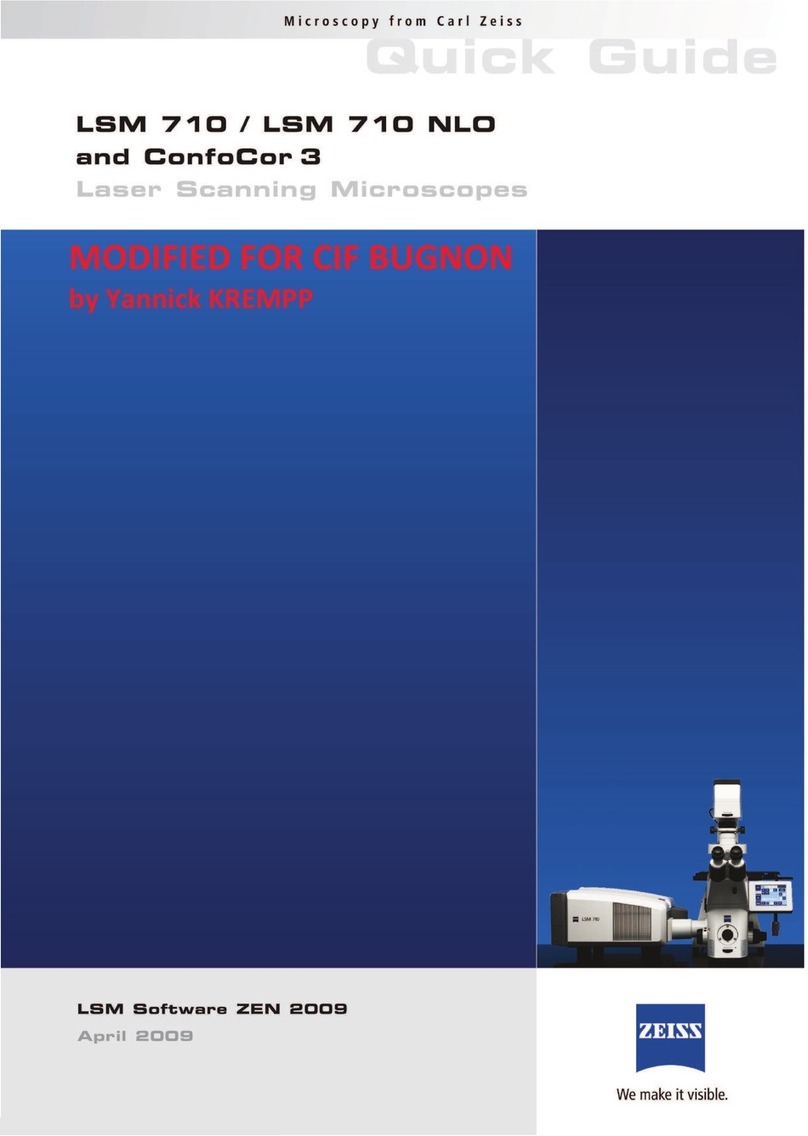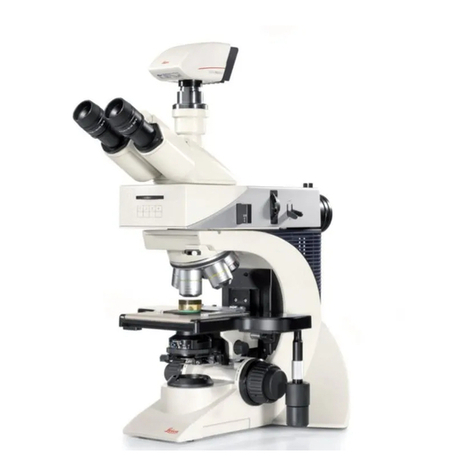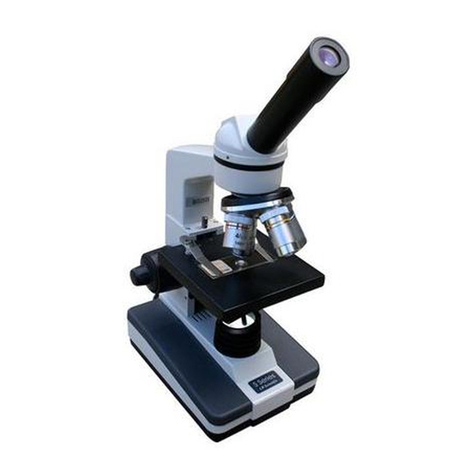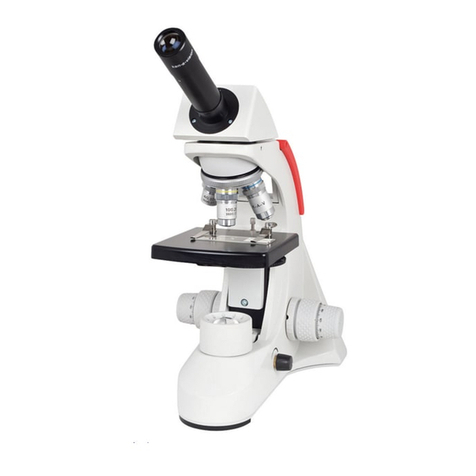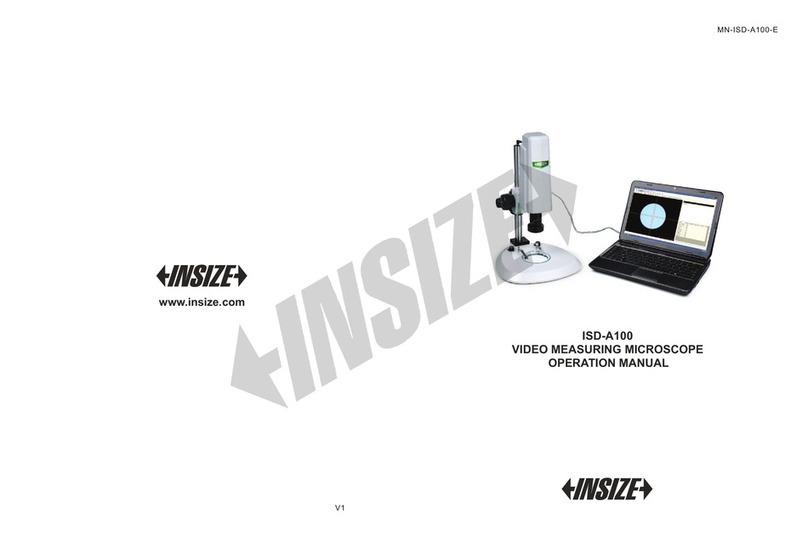Solaris Scientific CM300 Series User manual

“
B
r
i
l
l
i
a
n
t
I
d
e
a
s
B
r
o
u
g
h
t
T
o
L
i
f
e
!
”
Distributed by
CM300 Series
USER GUIDE

Read all instructions BEFORE assembly and USE of product.
KEEP INSTRUCTIONS FOR FUTURE USE.
Table of Content
Introducing Your CM300 Series Microscope ....................... 4
Features .............................................................. 4
Parts .................................................................... 5
Components of CM300 Series Microscope ........................ 6-7
Warnings ............................................................. 7
Getting Started .................................................................... 8
Package Contents ............................................... 8
Operating Your CM300 Series Microscope ......... 9-10
Cleaning and Maintenance .................................................. 11
Rechargeable Battery Replacement .................... 12
Lifetime Warranty ................................................................ 13
www.SOLARISSCIENTIFIC.com 3

CM300 Series Microscope
The CM300 precision compound series is the flag ship of the Carton Microscope education
line and is featured packed for use at all levels, K-12. Each model is die-cast aluminum and
designed to withstand the constant rigors of the classroom. All removeable parts are locked
for tamper proof security.
This educational microscope is equipped with high quality glass optics and prisms delivering
crisp, bright images. Featuring DIN standard high quality optics in three or four objective
configuration (40XRD and 100XRD objectives are sealed to prevent contamination from
contact with immersion oil) and avaliable in two different Green Friendly illumination systems
- fluorescent and variable intensity, cordless LED for superior illumination.
DOUBLE INSPECTION
You can rest easy! Each CM300 microscope is rigorously tested at the factory and again at
Solaris Scientific headquarters before they are sent to you, our customer. In addition to our
industry leading Double Inspection all CM300 microscopes are backed with a Lifetime
Warranty.
FEATURES
W10X 18mm Eyepiece with Pointer and Scale
Built To Last/ Tamper Proof Design
-Locked on eyepiece and slide clips
-Slip clutch gear protector
-Sealed 40XRD, 100XRD
All Glass Lenses and Prisms
Plastic Iris diaphragm Protector
FDA approved synthetic lubricant
CE /UL Approved Power Adapter
Green Friendly Illumination
-Fluorescent (CM301 and CM302 models)
-Cordless LED (CM303 and CM304 models)
Cool White Incident and Transmitted Light
Lifetime Warranty
www.SOLARISSCIENTIFIC.com 4

www.SOLARISSCIENTIFIC.com 5
Parts
1 W10X Eyepieces
2 Head
3 Objective Barrel or Nosepiece
4 Spring Loaded Stage Clips
5 Stage
6 Disc Diaphragm
7 Arm
8 Coarse Focus
9 Fine Focus
10 LED Illumination (pictured)
11 Base
12 Dimmer Switch
13 Power Switch
1
2
4
6
10
8
11
13
5
3
9
7
12

Components of the Microscope
COMPOUND MICROSCOPE - designed for viewing small cells, or thin sections of organs or
tissues placed on a glass mounting slide. The specimens are thin enough that light can pass
through them from below. Magnifications of the CM300 series generally range from 40X to
400X.
HEAD - the part of the microscope contains the eyepiece lens with an independent path of light
to the eye. Also able to rotate 360 degrees for shared viewing.
EYEPIECE - the lens that you look through at the top of the microscope. This optical
element further magnifies the image of the specimen and is critical to the total magnification.
WIDE FIELD EYEPIECE - offers a large diameter and shows a wide area field of view. Field
of view is determined by magnification and eyepiece design.
OBJECTIVE BARREL or NOSEPIECE - the revolver that carries the objective lenses.
OBJECTIVES - the optical systems which magnify the primary image of the instrument. The
objectives are fitted into the nosepiece and typical magnifications are 4XD, 10XD, and 40XRD.
ARM - the part of the microscope frame that connects the head and the base.
COARSE FOCUS - the coarse focus control knobs move the stage up or down to bring the
specimen into focus.
FINE FOCUS - the fine focus control knobs bring the specimen into sharp focus.
STAGE - where the specimen is placed for viewing. Located directly under the objective lenses
and over the transmitted (bottom) light.
MECHANICAL STAGE (CM302 and CM304 models) - mounted microscope stage that
moves specimen slide by means of two dials allowing East to West and North to South
precision movement and positioning. Ideal at 400X or higher magnification where precise
movement is most critical.
FINGER CLIP - designed to gently hold slide in place while being viewed on the mechanical
stage.
ABBE CONDENSER (CM302 and CM304 models) - a device that condenses and
focuses the light from the light source. The function of the condenser is to provide full
illumination to the specimen plane and to enhance the resolution and contrast of the object
being viewed. The condenser is most important at 1000X and above.
www.SOLARISSCIENTIFIC.com 6

IRIS DIAPHRAGM (CM302 and CM304 models) - leaf aperture designed to regulate the
amount of light admitted to the condenser. Primary function is to increase or decrease
contrast of the specimen.
DISC DIAPHRAGM - circular plate between the light source and the stage that is used to
spread transmitted light evenly through the specimen using predetermined aperture settings.
BASE - the platform of the microscope that extends from the bottom of the arm. Housing the
transmitted (bottom) light, illumination switches and power plug.
ILLUMINATION - light source. The CM300 offers two illumination options, variable fluorescent
and low voltage Light Emitting Diode (LED).
AC ADAPTER/CHARGER (CM303 and CM304 models) - the charger is designed to bring
the rechargeable batteries to full capacity. Twelve (12) hours of charging allows for forty (40)
hours of run time. Also, allows the use of direct AC power.
GREEN FRIENDLY DESIGN (CM303 and CM304 models)- the CM300 is fully portable
using internal batteries that last over forty (40) hours on one twenty-four 24-hour charge.
Unlike directly wired systems that are connected to the power grid, the use of a cordless scope
minimizes its carbon footprint over its life.
www.SOLARISSCIENTIFIC.com 7
WARNINGS:
TO AVOID RISK OF FIRE use only Rechargeable NiMH Nickel Metal Hydride or Li Ion Lithium
Batteries. Installation of standard non-rechargeable batteries may result in serious damage or
fire.
DO NOT carry microscope by the head. All microscopes should be carried by arm with
support to the base. Improper handling of microscope may cause damage not covered under
warranty.

www.SOLARISSCIENTIFIC.com 8
Getting Started
BEFORE USING your microscope check to make sure your package contains all the parts
listed below. If any parts are missing, call our service department at 408.736.0160 or contact
PACKAGE CONTENTS
The CM300 microscope is in a single molded styrofoam container, completely
assembled and ready to use. Package contents are as follows:
Monocular Head
W10X 18mm Eyepiece Locked
CM300 Stand (Fluorescent or LED)
Objective Package
Immersion Oil (CM302 and CM304 models)
Dust Cover
Care and Use Manual
In the event of damage or problems contact our service department for instructions at

www.SOLARISSCIENTIFIC.com 9
OPERATING YOUR CM300 MICROSCOPE
Once you have assembled your microscope, learned the terminology and purpose of each
component of the microscope, use of the microscope is simple and enjoyable. By following
these easy steps, you will be able to begin studying the specimen quickly and easily:
1. Plug the power cord into a regular 120V wall outlet. When using CM303 or
CM304 models allow time for LED to charge before use.
2. Secure the slide on the stage using the spring loaded finger clips. Make sure
the specimen is located over the aperture opening on the stage and directly
under the objective lens.
3. Rotate the nosepiece to lowest power objective (4XD). Be sure the objective
“clicks” into position.
4. Open disc diaphragm to its largest aperture to allow for the greatest contrast
and even dispersion of light.
5. Looking through the eyepiece, use the coarse focus know to bring the
specimen into focus. This should be done slowly and carefully. Use fine focus
knob to complete focus and provide sharpest image.
6. Higher magnification objectives are ready for use. The CM300 objectives are
parfocalized and once set at lowest objective (4XD), only slight turn of the fine
focusing knob is required when changing to 10XD, 40XRD and 100XRD
(CM302 and CM04 models).
For use with Mechanical Stage:
1. Using the finger clip lever, open the finger clip and place the slide along the
back edge of the mechanical stage. Slowly release the finger clip lever to
keep the slide in place.
2. Align the slide under the objective lenses. Use the High Drive Mechanical
Stage Controls to adjust slide position. The closest knob moves the slide East
to West (right/left) while the furthest knob adjusts the slide North to South
(back/front).
4. For best view of specimen, rotate the nosepiece to lowest power objective
(4XD). Be sure the objective “clicks” into position.
5. Looking through the eyepiece, use the coarse focus know to bring the
specimen into focus. This should be done slowly and carefully. Use fine focus
knob to complete focus and provide sharpest image.

6. For additional contrast, open the iris diaphragm to its largest aperture. Slowly
close diaphragm until the details of the specimen are sharply defined. Watch
to not over adjust aperture, reducing aperture increase contrast and depth of
focus, but it also reduces resolution and introduces diffraction. The aperture
must be adjusted for each objective.
NA 0.25 for 10XD, NA 0.65 for 40XRD, NA 1.25 for 100XRD
The iris diaphragm is not intended to control the brightness of the illumination
but induce contrast of the specimen by diffracting light rays.
7. Higher magnification objectives are ready for use. The CM300 objectives are
parfocalized and once set at lowest objective (4XD), only slight turn of the fine
focusing knob is required when changing to 10XD, 40XRD and 100XRD.
www.SOLARISSCIENTIFIC.com 10

Cleaning and Maintenance
You can rest easy! Each CM300 microscope is rigorously tested at the factory and again at
Solaris Scientific headquarters before they are sent to you, our customer. In addition to our
industry leading Double Inspection, all CM300 microscopes are backed with a Lifetime
Warranty.
Carton Micro System microscopes are designed to function with minimum maintenance.
Certain components should be cleaned frequently to insure ease of viewing.
The eyepiece and objective lenses should never be wiped while dry as this will scratch or
otherwise mar the surface of the glass. These surfaces should first be brushed with a soft,
camel hair brush or blown off with air pressure from a rubber syringe, to remove dust
particles. In most instances, the lens may then be cleaned by moistening its surface with
water, and then wiped with a good quality lens tissue folded several times and moistened.
CLEANING
Eyepieces should be cleaned as often as necessary to maintain them in good condition to
allow easy viewing. Clean the eyepieces by brushing away dust particles, using a soft camel
hair brush, then moistening the lens by breathing onto it. Wipe the lens carefully with good
quality lens tissue folded several times. If dirt or other foreign matter still remains, it may be
necessary to use a solvent such as Xylol. Note: the lens tissue should be moistened, not
saturated, with Xylol for cleaning, after which the lens should be dried, also with good quality
lens tissue.
Painted surfaces should be cleaned frequently with mild detergent and a soft cloth.
CAUTION: Objectives should never be disassembled by user. If repairs or internal cleaning are
necessary, this should only be done by a qualified, authorized repairman. A protective cover plate has
been placed in front of the objectives on the turret housing to protect these delicate lenses from debris
or handling.
The microscope should be disassembled, cleaned and lubricated, periodically. This should
be done only by a qualified, authorized repairman. Our facilities in Sunnyvale, CA as well as
our authorized repair dealer network can perform this routine maintenance.
www.SOLARISSCIENTIFIC.com 11

REPLACING YOUR RECHARGEABLE BATTERY PACK ON LED MODELS
Your CM303 and CM304 come pre-installed with 3 rechargeable AA nickel metal hydride
(NiMH) batteries. When replacing the batteries remove the four base plate screws located in
the center of each rubber foot, slide the battery holder case lid back and install batteries ac-
cording their correct polarity (+,-). Replace battery cover and base plate cover with its four
screws.
WARNINGS: TO AVOID RISK OF FIRE use only Rechargeable NiMH Nickel Metal Hydride or Li Ion
Lithium Batteries. Installation of standard non-rechargeable batteries may result in serious damage or
fire.
RECYCLING YOUR RECHARGEABLE BATTERY
In an effort to do our part we have become members of the RBRC
(Rechargeable Battery Recycle Company). This organization is made up
of companies like Sony, Panasonic, DeWalt, Mikita, etc., which provide
an outlet for the proper disposal of the various types of rechargeable
batteries used in systems like our portable microscopes.
Proper disposal of these rechargeable batteries is critical to the well being of our planet.
Please join us in this effort by calling the toll free number on stickers located on each portable
scope for the location of a fellow member entrusted with the recycling of these batteries.
To Find a Drop Off Site Near You:
1. Use the drop off site locator at www.rbrc.org
2. Call the consumer helpline, 1.800.8.BATTERY or 1.877.2.RECYCLE
www.SOLARISSCIENTIFIC.com 12

www.SOLARISSCIENTIFIC.com 13
Lifetime Warranty
All Carton Micro System microscopes have a limited lifetime warranty against defects in
material and workmanship. Warranty on all electrical components is covered for five (5) years
and digital components are covered for three (3) years. This warranty is conditional and
subject to review by Solaris Scientific.
Damage resulting from repair by unauthorized parties or damage deemed to be from accident,
alteration, misuse, abuse or act of God is not covered. Warranty claims can only be
authorized by Solaris Scientific technicians and will be repaired free of charge when returned
to us. This warranty gives you specific legal rights and you may also have other rights which
vary from state to state.
UNAUTHORIZED ADDITION OF SYSTEM COMPONENTS Solaris Scientific, LLC is not
responsible for the addition of any accessory to our microscope systems that is not officially
recognized or sold by our company. Those added components will not be covered by our
warranty, nor will any resulting damage caused to our systems from the use of these
components.
WARRANTY CLAIMS can only be authorized by Solaris Scientific technicians. In the unlikely
event that an issue arises with your Carton Micro System product please call 408.736.0160
to speak with a Customer Service Representative. A Return For Inspection Number (RFI) is
required for all Carton Micro System repairs, service and returned merchandise. Returns will
not be accepted without an RFI.
DESIGN CHANGES
Solaris Scientific reserves the right to make changes in instrument design in accordance with
changes in technology without notice or obligation.

1292 Kifer Road, Suite 806
Sunnyvale, CA 94086
© Solaris Scientific, LLC 2008. All rights reserved.
www.SOLARISSCIENTIFIC.com
Table of contents
Popular Microscope manuals by other brands

Niigata seiki
Niigata seiki XZ-45N instruction manual

BestScope
BestScope BS-3010A instruction manual
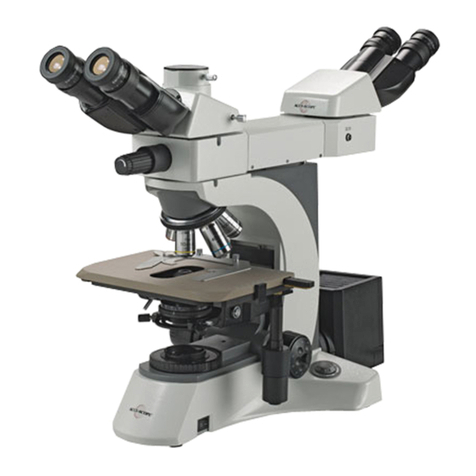
Accu-Scope
Accu-Scope 3025 Supplemental instructions
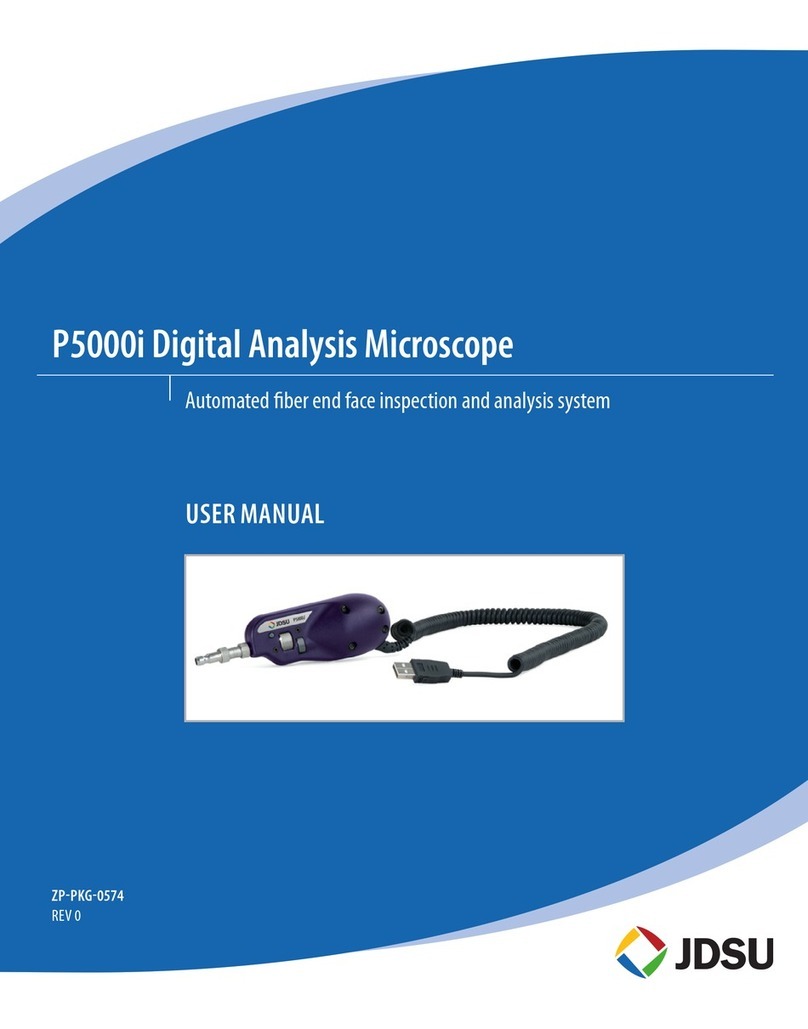
JDS Uniphase
JDS Uniphase P5000i user manual
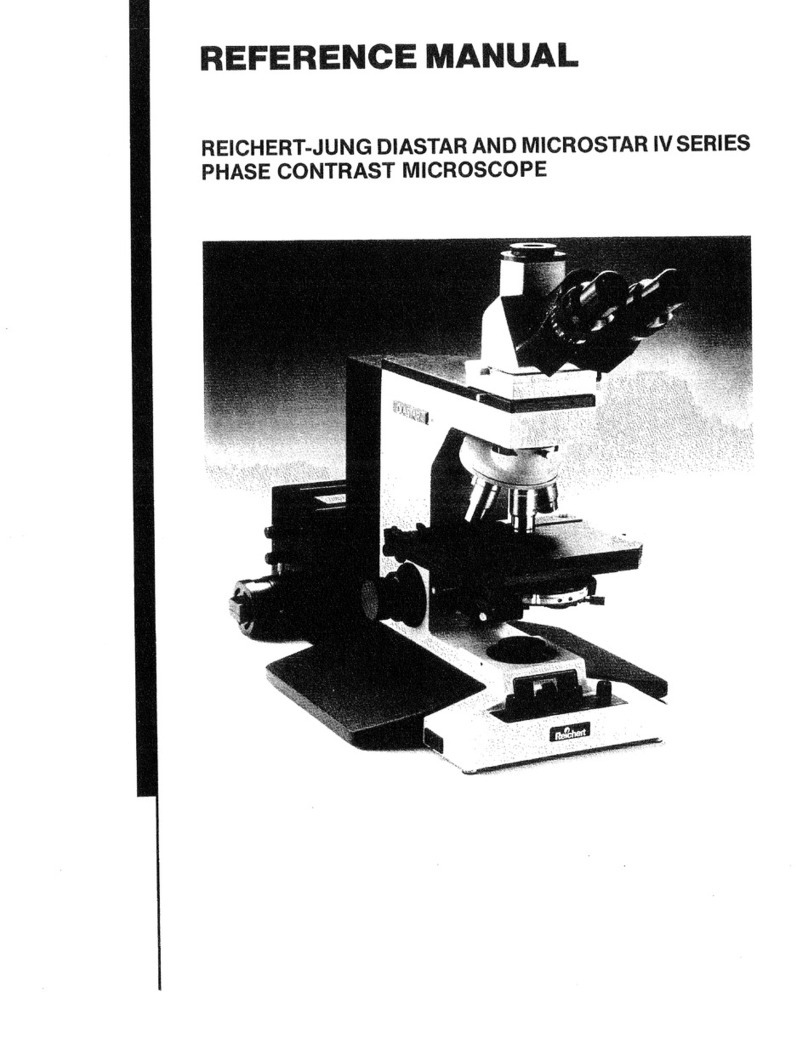
Reichert
Reichert Jung diastarIV Series Reference manual
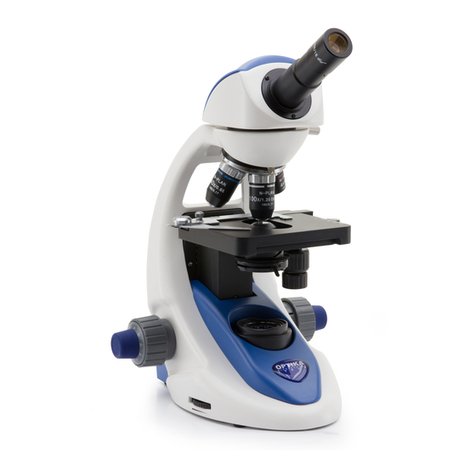
Optika Italy
Optika Italy B-190 Series instruction manual
